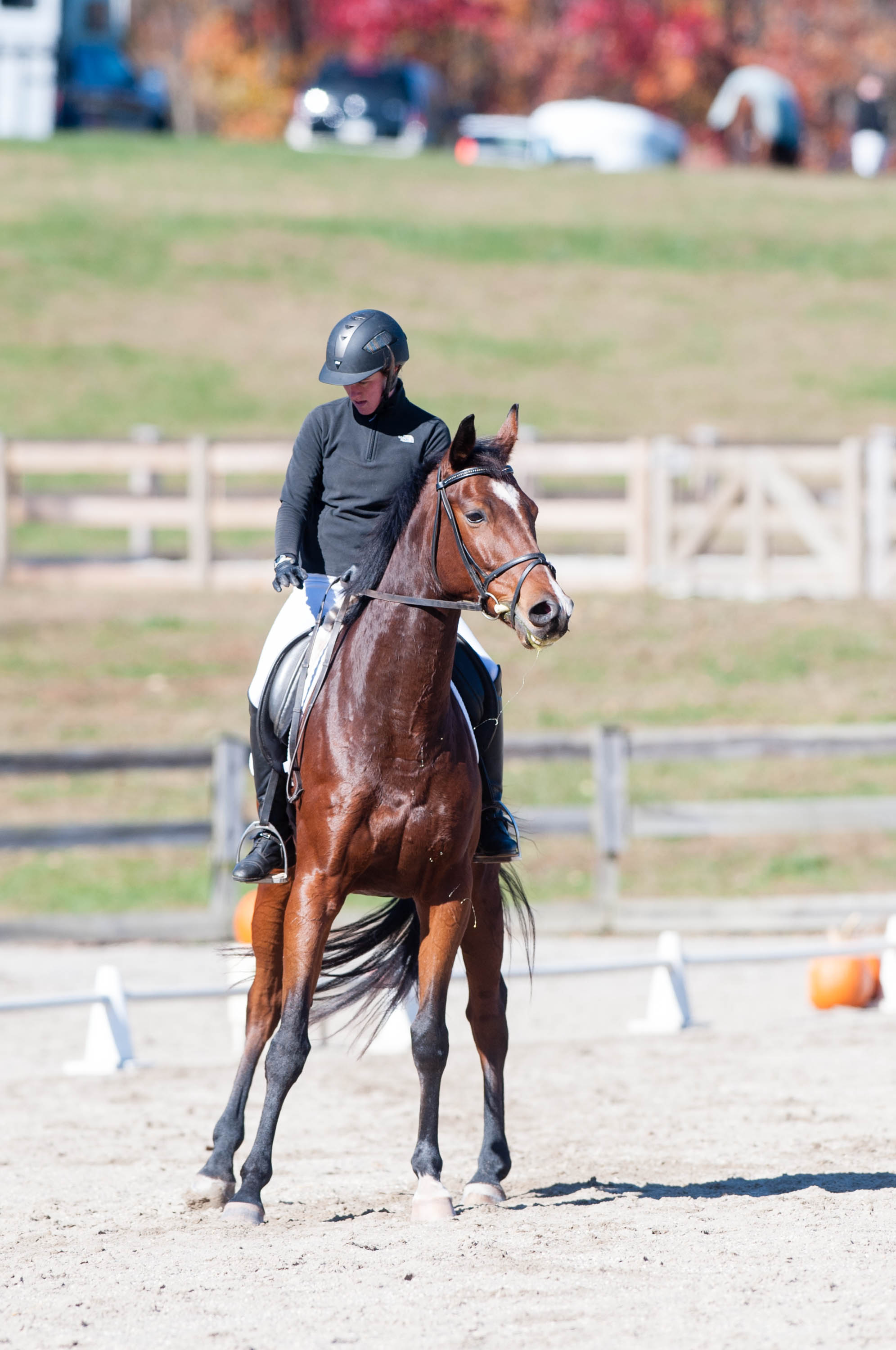Q: My horse often spooks during the test when I show in an unfamiliar location. How can I minimize the spooking? What should I do when my horse spooks in the middle of the test?
—Elaine Graham
A: As a rider, you have to accept the fact that horses are flight animals by nature and given the right conditions, any horse has the potential to spook. Some horses might spook violently, potentially unseating riders, while others might only get big-eyed but continue on in their work. Some horses spook more from noise, while others are afraid of things they see.

It takes a sensitive rider to figure out what the triggers for spooking are. But given time, patience and proper training, you can “de-spook” your horse to some degree. The instinct that helps riders overcome spooking is the herd instinct, as in a herd a horse feels safer and is less likely to spook. When training properly, you and your horse essentially become a herd of two. Hopefully, with time, your horse learns to trust you as his leader, which eventually will give him confidence in your ability to keep him safe in scary situations.
It’s important to remember that the results of good training make the horse more confident and calm. But it’s also important to acknowledge that dressage training is progressive and takes time. From the first day a foal is handled on the ground and from the earliest rides on a youngster, we are teaching them the concepts of trust and respect. With a young foal, we are simply looking to be able to lead him, groom him and work around him. With a young horse, we are training him to longe and go forward quietly under saddle. Some horses can be completely de-spooked just by training them correctly in front of the leg. With others, you must be more creative in building confidence in scary situations.
De-spooking a horse starts with basic tasks at home, in a place where your horse doesn’t feel threatened. Small steps can have a huge influence. For example, last winter we had two 3-year-olds in training and spent a lot of time playing with tarps and other strange objects in the arena, making the environment different on a regular basis. At first, the youngsters were leery of the new objects, but by the end of the winter they enjoyed their playtime and were caught grabbing tarps in their mouths for fun. As a result, they went out to their first shows and both were extremely brave once they had overcome the excitement of being in unfamiliar surroundings.
You can play de-spooking games like this with horses of any age. But to do it safely and productively, it’s best to consult a professional who understands how to do it correctly. I always suggest professional eyes, as horses are dangerous, and if de-spooking is done incorrectly, you risk making your horse more afraid or even causing bodily injury to you or your horse.
Building confidence in an older horse who’s more confirmed in spooking behavior will take more time, but it’s never too late to improve your horse’s trust in you. Most importantly, you must never punish a horse for spooking. Riding the horse actively forward before a spook is one thing, but if he shies and then is punished, he will learn to associate the scary object with being punished, making him more afraid and increasing the potential for a more violent spook.
Once the horse is confident with strange objects at home, start taking him off the farm and work on confidence-building in different places. When riding in a show, arrive at the show a day before and train in the new arena if possible. You can also go to shows as a non-compete combination and just train to get your horse more used to that environment. The more environments you can expose your horse to and give him a positive experience that builds trust in you as the leader, the more confidence you will ultimately build in your horse.
To minimize spooking in the show arena, preventing the spook before it happens (if you can) is key. When you feel a spook coming, try regaining your horse’s attention to your inside leg. Try not to take one rein or the other, which can imply backward riding and make a spook worse, as it puts the horse behind the leg. Rather, make sure to support your horse with both reins as you ride him actively forward into a slight shoulder-fore position with your leg aids and past what he’s afraid of. The reins help control the shoulders and help him stay on track and the leg aids remind him to stay obedient to your aids.
Should your horse spook during the test, forget it and move on. If you dwell on it and stop riding, things can snowball downhill fast. Regarding your score, one 4 in a sea of 7s and 8s can still result in a pretty good score if you rebound well.
Cindi Wylie is one of 9 USDF FEI Certified Instructors in the country, a USEF “S” dressage judge with certifications in freestyle, young horse and equitation. She also is a USDF bronze, silver and gold medalist. She has trained horses from their first steps under saddle to the Grand Prix level. She is competing at the CDI Grand Prix level and based in Palm Beach Gardens, Florida. For more information about her, go to cindiwylie.com.
This article first appeared in the January 2018 issue of Dressage Today.











